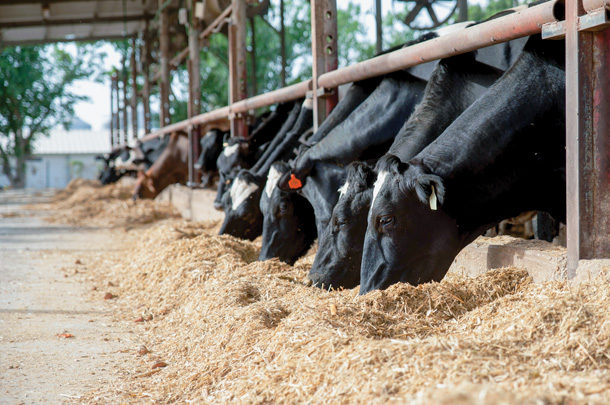Calculating feed costs can result in more cost-efficient rations, while calculating feed efficiency can help producers more objectively evaluate rations and production over time. This is especially important when input costs are high but returns are low.
There are two ways producers can manage feed efficiency. The first is to increase milk production at the same rate of feed. The other is to decrease feed intake and keep milk production at the same level. However, it’s important for producers to understand: While feed efficiency is an important metric to measure and monitor regularly, profitability should also be considered. High feed efficiency does not always equal high profitability. If you’re spending more on feed to increase milk production, you may not see profit.
When evaluating feed efficiency, there are several factors that influence success and profitability.
Start with a proper, balanced diet and strong forages
Nutrition is the foundation of optimal animal performance and digestion, so it’s important to work closely with your herd nutritionist to ensure your rations are built to help maximize digestibility. Forages have the largest impact on feed efficiency. You can’t formulate your way out of poor-quality forages, so forage management and a focus on growing or purchasing good-quality forages is key. Additionally, producers can consider including additives designed to help support optimal digestion of various feed types in their dairy rations. This can help support volatile fatty acid (VFA) production and, in turn, support both milk production and milk component yield, resulting in optimal feed efficiency and an increased return on investment potential.
Evaluate income over feed costs
If efficiency is your ultimate goal, then knowing your dairy feed costs can help. Feed cost per hundredweight (cwt) of milk is a key indicator of economic efficiency. Do you know the value of each additional pound of milk? That’s where income over feed cost comes into play.
By calculating income over feed cost, you can build a more cost-efficient dairy feed ration by estimating how much income you gain from a ration change. Including milk production and current cost per cwt in the income over feed cost calculation gives you the return on investment for making a feed ration change. As market prices fluctuate, understanding the impact a feed ration change can have on your bottom line can help you make progress toward improved dairy feed cost efficiency.
Monitor dry matter feed efficiency
Looking at dry matter feed efficiency is another consideration to help you understand how efficiently your dairy cows convert feed into milk. Dry matter feed efficiency is more closely related to dry matter intake (DMI) and milk changes, as compared to income over feed cost. In fact, neither dairy feed costs nor milk price has any impact on dry matter feed efficiency. In general, however, as feed efficiency improves, it’s typical for income over feed cost to improve.
Some key factors that can impact dry matter feed efficiency include breed, parity, days in milk (DIM), season or bodyweight changes. Analyzing individual group dry matter feed efficiency can also help you determine more precise needs of each group and make more efficient use of feed ration ingredients.
Understand the population of cows you are evaluating
On your own operation, it’s valuable to look at feed efficiency by specific groups of cows. For example, your high-group pen may have different feed efficiency metrics than your low pen. It’s also important to take stage of lactation into consideration. Each cow’s nutritional needs may not be the same as the cow eating next to her, so it’s best to keep in mind a cow’s individual needs and grouping strategies to help more cows reach peak efficiency. Evaluating these different groups can help you gauge when a diet change may be needed for that specific group.
Use the data you have available to you
While accurately measuring DMI is a challenge, having a solid estimate can still help guide your decision. Get comfortable using the data that’s available to you, and don’t fret about being too precise. It’s also important to use data meaningful to the ways in which you are compensated. For example, a producer in the fluid milk market shouldn’t focus on component measurements; however, if you’re compensated on components, you should focus on energy-corrected milk, not just a tank average.
Both dairy feed costs and efficiency can be challenging to navigate, but good data can lead to great results for you and your herd. ![]()
PHOTO: When evaluating feed efficiency, there are several factors that influence success and profitability. Photo courtesy of Purina.
-
Katie Boesche
- Senior Technical Support Consultant
- Purina Animal Nutrition
- Email Katie Boesche






